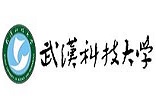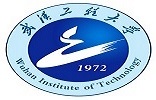2018 International Conference on Intelligent Computing
August 15-18
,2018
Wuhan,China
(http://www.ic-icc.cn/2018/index.htm)
 ICIC2018 Online Attendance Confirmation System: Click here
ICIC2018 Online Attendance Confirmation System: Click here
Conference Venue
ICIC2018 Conference Venue is Chutian Guangdong International Hotel (http://chutianhotelwuhan.
com), which has a unique and favorable natural environment. It is located in the golden point of Wuhan, a very important city in the middle and lower reaches of the Yangtze River. It faces the East Lake Scenic Area which is called as the Lung of Wuhan that you can enjoy the beautiful sceneries and feel the warmth and comfort of the room. The stylish and fully- equipped room amenities and family services can provide you with an ideal place for business and leisure.
The hotel is adjacent to East Lake Scenic Area, provincial museum, provincial art museum and Chutian 181 Culture Creativity Park where there is extremely strong cultural atmosphere. The hotel is only 1, 200m from Wuhan Central Cultural Area, Chuhehan Street with a total investment of RMB60 billion Yuan and 3, 000m from Wuhan Oversea Chinese Town (OCT). And the hotel is also located in the commercial, cultural and political core circle of Wuhan where is just five-minute’s drive from the provincial committee and provincial government. The hotel is just 10 to 30 minute’s drive from the airport, bus station and wharf. There are many bus lines passing through this location. And there is also very convenient traffic and a very huge business opportunity that is the best choice for tourists and holding business meetings.
Location and Road Map
For ICIC 2018, the venue for the registration on the first day (Aug. 15, 2018) of the conference is Chutian Guangdong International Hotel.

Room Rates(Chutian Guangdong International hotel)

注:
1)所有房间均含一份早餐,另加一份早餐58元/位;
2) 所有房间备有免费宽带和WiFi, 国际国内长途电话和空调;
3)酒店房间有限,请您提早预订。
4)为了保证您能享受此次团队价入,请致电+86-027-86628888转预订部或发送订房信息到邮箱: ctyh_ydb@qq.com。
Notes:
1)All rooms are included one breakfast, extra breakfast is charged 58 RMB/ person;
2)All rooms are equipped with free broadband, domestic and international long-distance telephone, and air condition;
3)As the hotel is offering limited number of rooms ,please book as early as possible.
4)To enjoy these special rates, please call+86-027-86628888-reservation or send reservation information to the mailbox: ctyh_ydb@qq.com.
Wuhan Impression
 Wuhan is the capital of Hubei province, China, and is the most populous city in Central China. It lies in the eastern Jianghan Plain at the intersection of the middle reaches of the Yangtze and Han rivers. Arising out of the conglomeration of three cities, Wuchang, Hankou, and Hanyang, Wuhan is known as "Jiusheng Tongqu (the nine provinces' leading thoroughfare)"; it is a major transportation hub, with dozens of railways, roads and expressways passing through the city and connecting to major cities in Mainland China. Because of its key role in domestic transportation, Wuhan was sometimes referred to as the "Chicago of China" by foreign sources.
Wuhan is the capital of Hubei province, China, and is the most populous city in Central China. It lies in the eastern Jianghan Plain at the intersection of the middle reaches of the Yangtze and Han rivers. Arising out of the conglomeration of three cities, Wuchang, Hankou, and Hanyang, Wuhan is known as "Jiusheng Tongqu (the nine provinces' leading thoroughfare)"; it is a major transportation hub, with dozens of railways, roads and expressways passing through the city and connecting to major cities in Mainland China. Because of its key role in domestic transportation, Wuhan was sometimes referred to as the "Chicago of China" by foreign sources.
 Holding sub-provincial status, Wuhan is recognized as the political, economic, financial, cultural, educational and transportation center of central China. The city of Wuhan, first termed as such in 1927, has a population of 10,607,700 people as of 2015. In the 1920s, Wuhan was the national capital of a leftist Kuomintang (KMT) government led by Wang Jingwei in opposition to Chiang Kai-shek, as well as wartime capital in 1937. At the 2010 census, its built-up (or metro) area made of 8 out of 10 urban districts (all but Xinzhou and Hannan not yet conurbated) was home to 8,821,658 inhabitants.
Holding sub-provincial status, Wuhan is recognized as the political, economic, financial, cultural, educational and transportation center of central China. The city of Wuhan, first termed as such in 1927, has a population of 10,607,700 people as of 2015. In the 1920s, Wuhan was the national capital of a leftist Kuomintang (KMT) government led by Wang Jingwei in opposition to Chiang Kai-shek, as well as wartime capital in 1937. At the 2010 census, its built-up (or metro) area made of 8 out of 10 urban districts (all but Xinzhou and Hannan not yet conurbated) was home to 8,821,658 inhabitants.

|

|
With a 3,500-year-long history, Wuhan is one of the most ancient and civilized metropolitan cities in China. During the Han dynasty, Hanyang became a fairly busy port. In the winter of 208/9, one of the most famous battles in Chinese history and a central event in the Romance of the Three Kingdoms―the Battle of Red Cliffs―took place in the vicinity of the cliffs near Wuhan.[14] Around that time, walls were built to protect Hanyang (AD 206) and Wuchang (AD 223). The latter event marks the foundation of Wuhan. In AD 223, the Yellow Crane Tower was constructed on the Wuchang side of the Yangtze River. Cui Hao, a celebrated poet of the Tang dynasty, visited the building in the early 8th century; his poem made it the most celebrated building in southern China.[15] The city has long been renowned as a center for the arts (especially poetry) and for intellectual studies. Under the Mongol rulers (Yuan dynasty), Wuchang was promoted to the status of provincial capital; by the dawn of the 18th century, Hankou had become one of China's top four most important towns of trade.

In the late 19th century, railroads were extended on a north�Csouth axis through the city, making Wuhan an important transshipment point between rail and river traffic. Also during this period foreign powers extracted mercantile concessions, with the riverfront of Hankou being divided up into foreign-controlled merchant districts. These districts contained trading firm offices, warehouses, and docking facilities.

 On October 10, 1911, Sun Yat-sen's followers launched the Wuchang Uprising,[16] which led to the collapse of the Qing dynasty, as well as the establishment of the Republic of China.[18] Wuhan was the capital of a leftist Kuomintang government led by Wang Jingwei, in opposition to Chiang Kai-shek during the 1920s.
On October 10, 1911, Sun Yat-sen's followers launched the Wuchang Uprising,[16] which led to the collapse of the Qing dynasty, as well as the establishment of the Republic of China.[18] Wuhan was the capital of a leftist Kuomintang government led by Wang Jingwei, in opposition to Chiang Kai-shek during the 1920s.
During the Second Sino-Japanese War and following the fall of Nanking in December 1937, Wuhan had become the provisional capital of China's Kuomintang government, and became another focal point of pitched air battles beginning in early 1938 between modern monoplane bomber and fighter aircraft of the Imperial Japanese forces and the Chinese Air Force, which included support from the Soviet Volunteer Group in both planes and personnel, as U.S. support in war materials waned.[19] As the battle raged on through 1938, Wuhan and the surrounding region had become the site of the Battle of Wuhan. After being taken by the Japanese in late 1938, Wuhan became a major Japanese logistics center for operations in southern China. In December 1944, the city was largely destroyed by U.S. firebombing raids conducted by the Fourteenth Air Force. In 1967, civil strife struck the city in the Wuhan Incident as a result of tensions arising out of the Cultural.
Wuhan is in east-central Hubei, at latitude 29° 58'�C31° 22' N and longitude 113° 41'�C115° 05' E, east of the Jianghan Plain, and is at the confluence of the Hanshui and Yangtze Rivers along the middle reaches of the latter.
 The metropolitan area comprises three parts―Wuchang, Hankou, and Hanyang―commonly called the "Three Towns of Wuhan" (hence the name "Wuhan", combining "Wu" from the first city and "Han" from the other two). The consolidation of these cities occurred in 1927 and Wuhan was thereby established. The parts face each other across the rivers and are linked by bridges, including one of the first modern bridges in China, known as the "First Bridge". It is simple in terrain―low and flat in the middle and hilly in the south, with the Yangtze and Han rivers winding through the city. Wuhan occupies a land area of 8,494.41 square kilometres (3,279.71 sq mi), most of which is plain and decorated with hills and a great number of lakes and pools.
The metropolitan area comprises three parts―Wuchang, Hankou, and Hanyang―commonly called the "Three Towns of Wuhan" (hence the name "Wuhan", combining "Wu" from the first city and "Han" from the other two). The consolidation of these cities occurred in 1927 and Wuhan was thereby established. The parts face each other across the rivers and are linked by bridges, including one of the first modern bridges in China, known as the "First Bridge". It is simple in terrain―low and flat in the middle and hilly in the south, with the Yangtze and Han rivers winding through the city. Wuhan occupies a land area of 8,494.41 square kilometres (3,279.71 sq mi), most of which is plain and decorated with hills and a great number of lakes and pools.

Wuhan has seven bridges and one tunnel across the Yangtze River. The Wuhan Yangtze River Bridge, also called the First Bridge, was built over the Yangtze River (Chang Jiang) in 1957, carrying the railroad directly across the river between Snake Hill (on the left in the picture below) and Turtle Hill. Before this bridge was built it could take up to an entire day to barge railcars across. Including its approaches, it is 5,511 feet (1,680 m) long, and it accommodates both a double-track railway on a lower deck and a four lane roadway above. It was built with the assistance of advisers from the Soviet Union.

|

|

|

|
The Second Bridge, a cable-stayed bridge, built of pre-stressed concrete, has a central span of 400 metres (1,300 feet); it is 4,678 metres (15,348 feet) in length (including 1,877 metres (6,158 feet) of the main bridge) and 26.5 to 33.5 metres (86.9 to 109.9 feet) in width. Its main bridgeheads are 90 metres (300 feet) high each, pulling 392 thick slanting cables together in the shape of double fans, so that the central span of the bridge is well poised on the piers and the bridge's stability and vibration resistance are ensured. With six lanes on the deck, the bridge is designed to handle 50,000 motor vehicles passing every day. The bridge was completed in 1995.
Presently, the city of Wuhan is served by three major railway stations: the Hankou Railway Station in Hankou, the Wuchang Railway Station in Wuchang, and the new Wuhan Railway Station, located in a newly developed area east of the East Lake (Hongshan District). As the stations are many miles apart, it is important for passengers to be aware of the particular station(s) used by a particular train.

The (original) Hankou Station was the terminus for the Jinghan Railway from Beijing, while the Wuchang Station was the terminus for the Yuehan Railway to Guangzhou. But since the construction of the First Yangtze Bridge and the linking of the two lines into the Jingguang Railway, both Hankou and Wuchang stations have been served by trains going to all directions, which contrasts with the situation in such cities as New York or Moscow, where different stations serve different directions.
With the opening of the Hefei-Wuhan high-speed railway on April 1, 2009, Wuhan became served by high-speed trains with Hefei, Nanjing, and Shanghai; several trains a day now connect the city with Shanghai, getting there in under 6 hours. As of the early 2010, most of these express trains leave from the Hankou Railway Station.



